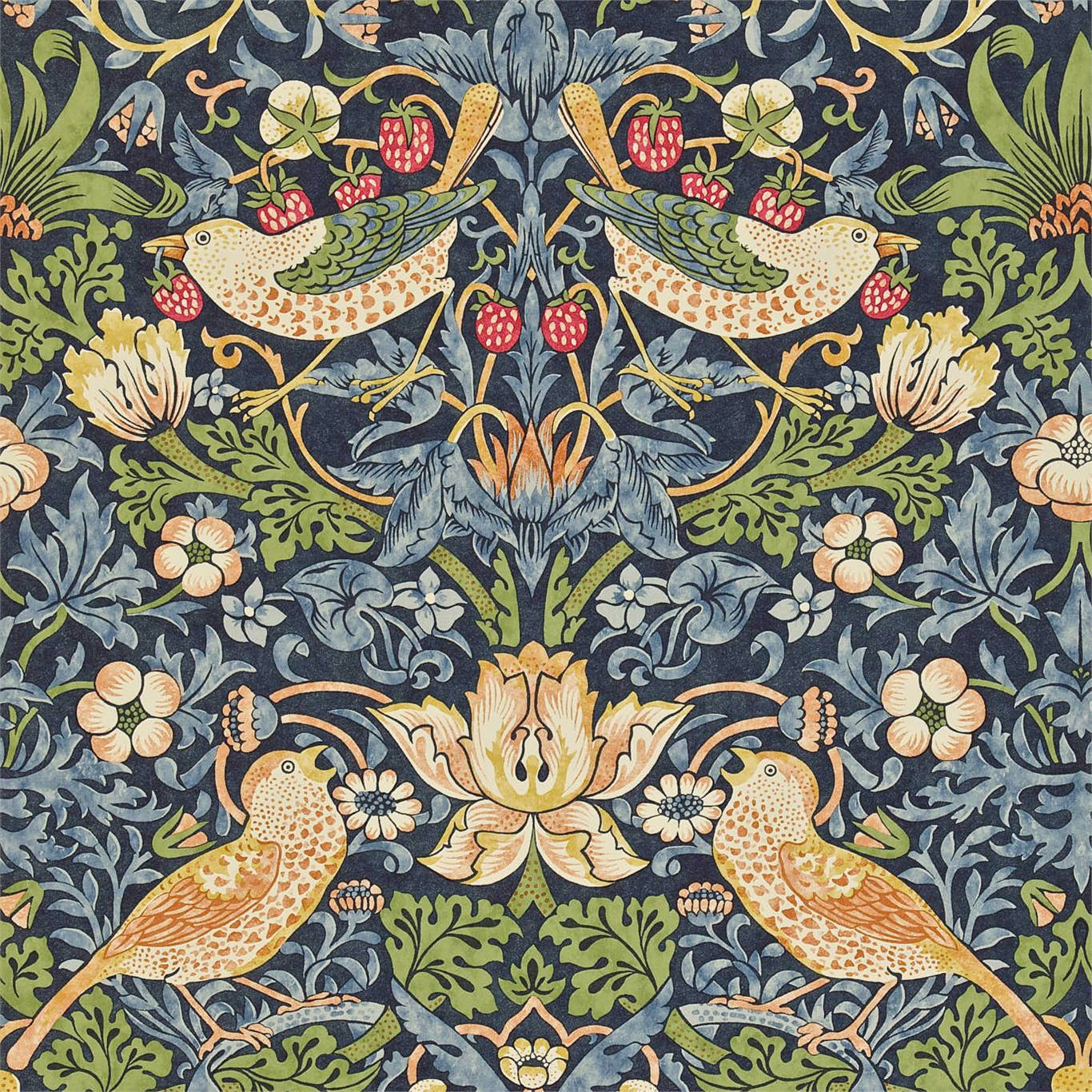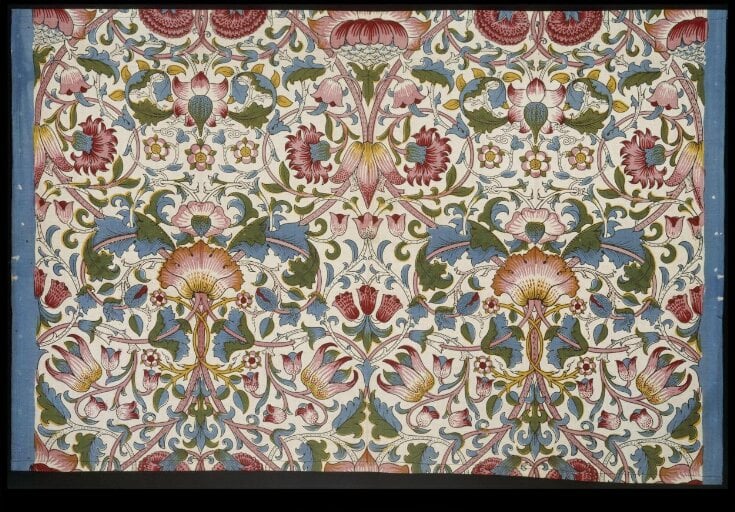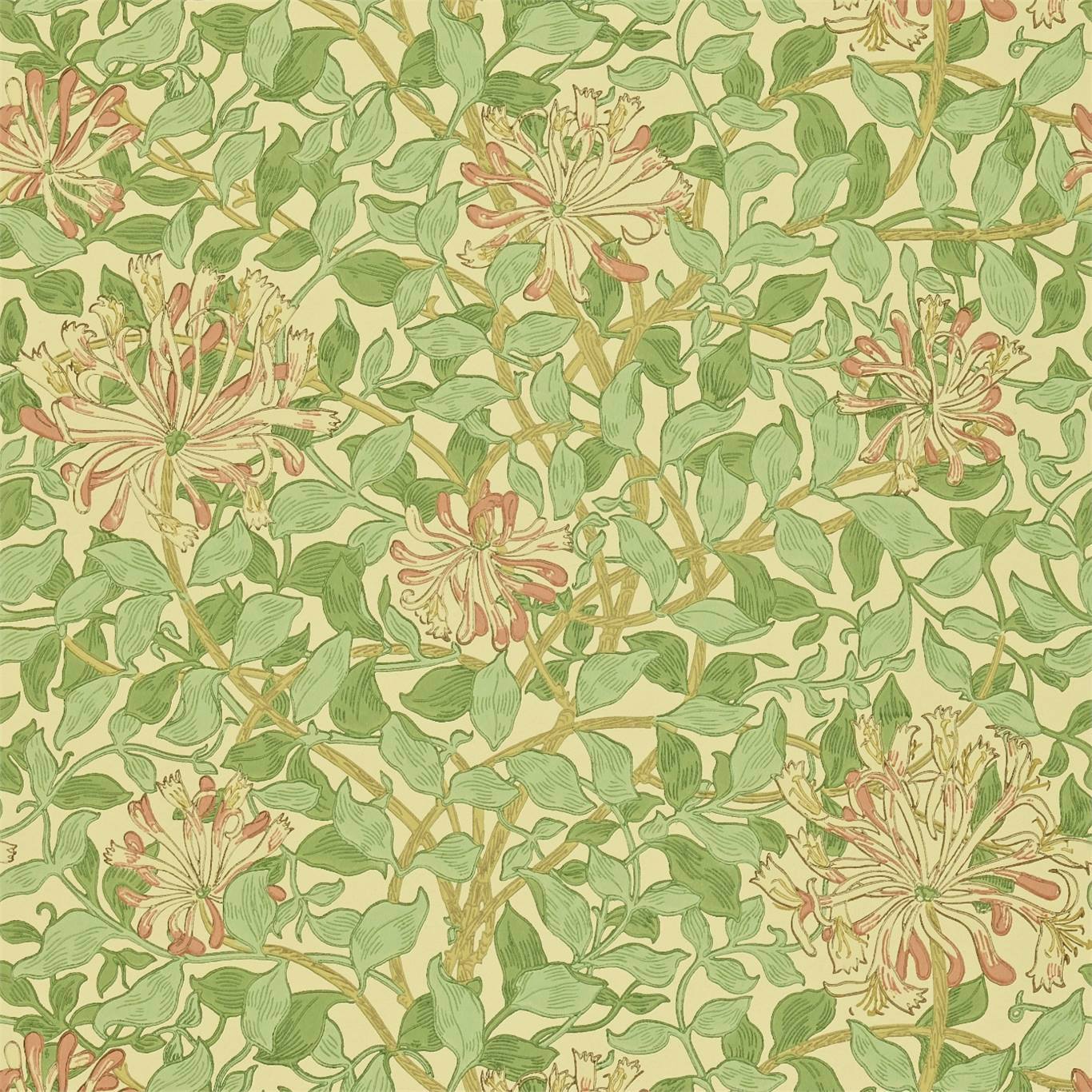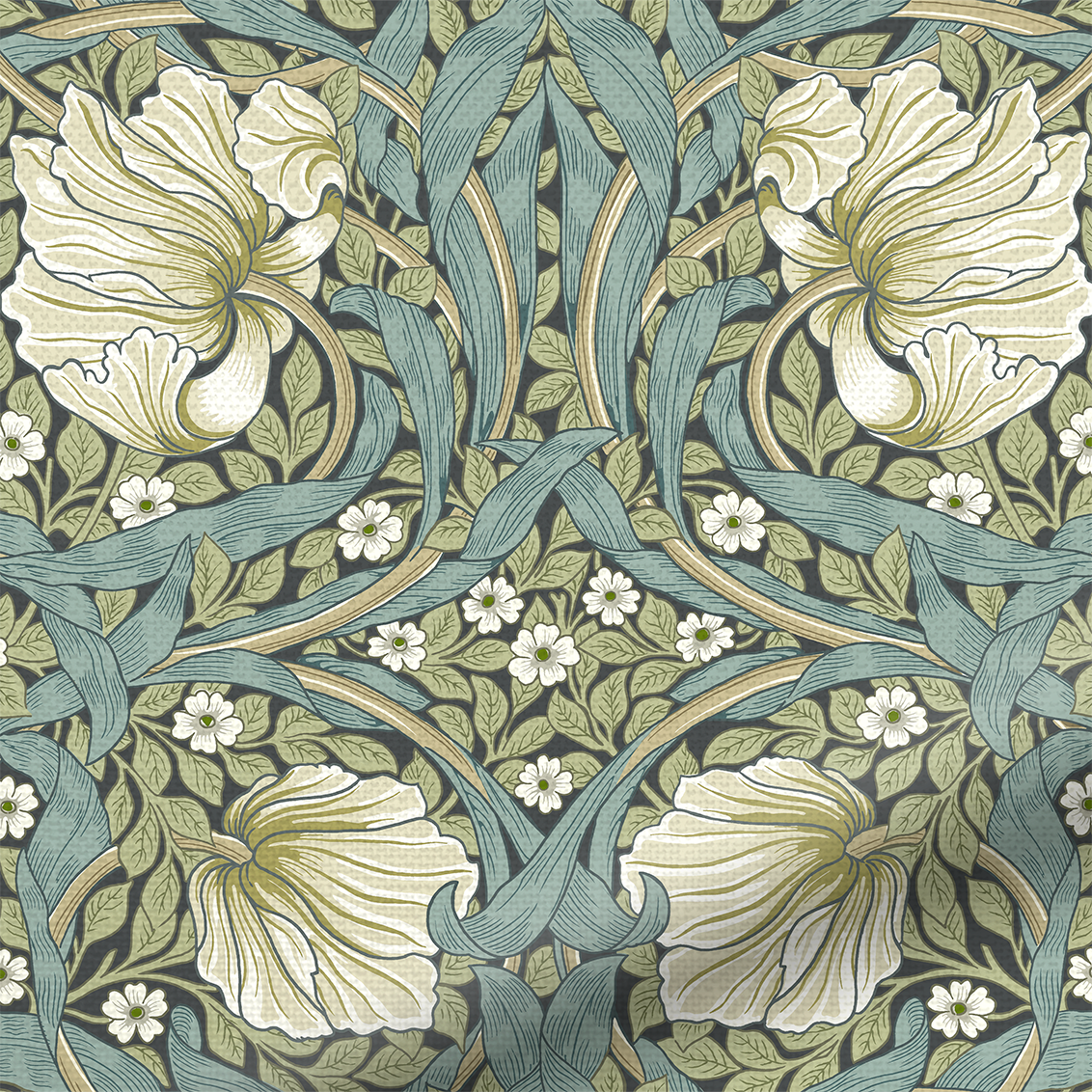William Morris played a crucial role in the Arts and Crafts Movement, which sought to counter the industrialisation of the 19th century by emphasising traditional craftsmanship, simple forms and the use of natural materials. Explore the origins and artistry behind some of Morris's most iconic creations, and learn where you can appreciate these masterpieces in museums today.
Strawberry Thief:

Inspired by the thrushes he observed stealing strawberries from his Kelmscott Manor garden, Morris crafted Strawberry Thief in 1883. The flattened profile of the birds as well as the stylisation of the plant forms highlight Morris’s appreciation and adaptation of Islamic designs. This design, often associated with block printing, was meticulously carved into wooden blocks to transfer the intricate motif onto fabric and wallpaper. To print the pattern Morris used the painstaking indigo discharge printing method that he admired above all forms of printing. He first attempted to print by this method in 1875 but it was not until 1881, when he moved into his factory at Merton Abbey, near Wimbledon, that he succeeded. Visitors can see examples of Strawberry Thief at the William Morris Gallery in London, a fitting homage to Morris's artistic ingenuity.
Lodden:
Conceived by John Henry Dearle under Morris's direction in 1884, Lodden captivates with its sprawling floral motifs. Employing a combination of hand-drawn sketches and woodblock printing techniques, Dearle brought Morris's vision to life on fabric. It was first printed using the indigo discharge method at Merton Abbey. This method involved several steps:
Dyeing the cloth: the entire cloth was dyed with blue indigo dye. Discharging the Dye: The areas that were not meant to remain blue were bleached, effectively removing the blue dye in those areas.
Block Printing: the remaining colours were applied using the block printing method. Morris was dedicated to reviving natural dyeing techniques, which he saw as endangered by the rise of commercial aniline dyes made from coal tar. These synthetic dyes produced harsh colours that would change and fade over time, which Morris disliked. He researched old French dyers’ manuals and experimented extensively to develop his own formulas for vegetable dyes, achieving naturally brilliant, fast, yet soft colours. Examples of Lodden can be seen at the Victoria and Albert Museum in London, showcasing Dearle's skilful interpretation of Morris's botanical aesthetic.

Honeysuckle:

In 1883, Morris unveiled Honeysuckle, a design characterised by delicate vines and blossoms and created by his daughter May Morris. This pattern, often reproduced using a combination of surface roller printing and hand finishing, reflects Morris's reverence for nature's beauty. It was made by Jeffrey & Co. founded in 1836 the company collaborated with Morris as early as 1864 and went on to work with Walter Crane and CFA Voysey. Birmingham Museum and Art Gallery holds an example, offering insight into Morris's commitment to exquisite craftsmanship.
Jasmine:
Conceived by Morris himself in 1872, Jasmine was a wallpaper design with a delicate arrangement of hawthorn leaves, blossoms and branches, elaborated with scrolling jasmine. The design was block-printed in distemper colours, a type of paint made from watercolour paint, a whiting element and glue. Although Morris initially encountered difficulties when translating the design into printing blocks. To simplify the process, the number of blocks used was reduced from 20 down to 11.

Pimpernel:

Dating back to 1876, Pimpernel showcases Morris's penchant for intricate floral motifs and a rich colour palette. The pattern is characterised by large, sensual tulips and their curling leaves, interspersed with small blue pimpernel flowers. It has more in common with wallpapers from the aesthetic period than Morris’s typical Arts and Crafts style. He loved this piece so much that he eventually hung it in his dining room at Kelmscott House in Hammersmith, West London.



